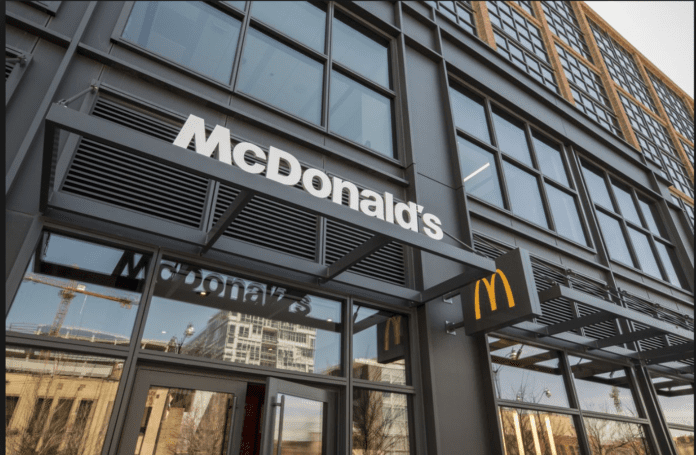McDonald?s improved employee workplace satisfaction by 76% through a smart building workplace app at the company?s new offices located in downtown Chicago.
?A simple feel-good moment, that was the corporate vision for our new headquarters. ?We wanted technology to drive the smart workplace experience and reflect our corporate culture and the way customers experience our brand,? said Scott Williams, director of CRE at McDonald?s at the?Future of Work Webinar: Smart Buildings Program, hosted by JLL.
McDonald’s newly built headquarters in West Loop, Chicago?s emerging restaurant district, was a dramatic shift from its previous suburban Oakbrook location. The company?s new global base encompasses 500,000 square feet and extends an entire city block; that is half the size of?its former Oakbrook offices, which were spread 2 miles across four buildings.
The new HQ includes a consumer-facing McDonald?s restaurant, a 45,000-square foot test kitchen, conference center, auditorium, two restaurants, outdoor terraces and numerous unassigned work areas.
Smart building apps drive workplace innovation
?For us, the challenge was how do you connect the work and the people, significantly reducing the overall footprint while bringing people together from separate [buildings] under one roof,? Williams said.
As a result, 95% of the work space in the new headquarters was unassigned, and the company used a smart building workplace app to enable employees to connect and collaborate.
?We wanted to drive innovation between our workforce by replacing cubicle partitions and create open environments to drive collaboration. ?We want our employees to select what type of space to work in,? Williams added.
The new design for workspaces included a modern, hotel-like lobby and reception area, unassigned work areas that were divided into areas called “neighborhoods” where employees from similar departments could collaborate, as well as private working spaces like library spaces and quiet zones.

Technology creating smart workplace experiences
The smart building workplace strategy designed by JLL was to create an agile and connected workplace through the support of indoor mobility positioning, way-finding, and occupancy sensors to measure and report space utilization.
The HQ?s smart building technology includes the ability for employees to adjust air temperature and flow via mobile; access to digital floor plans; Blue-dot navigation enabled way-finding to points of interest, work areas and exits; and a tool for placing work orders for building management systems and the ability to book conference rooms instantaneously.
JLL, which provided the smart building technology and workplace app, was focused on the $300 part of the 3/33/300 principal- the rule of thumb which breaks down organizations’ cost per square foot, in terms of total occupancy costs: $3 for utilities, $30 for rent and $300 for their employee costs (salaries, benefits, etc.).
“JLL?s focus was directly impacting the workforce aspect — the $300 part of the rule — and delivering a workplace that would enable employee retention and talent acquisition,? said Darlene Pope, global practice lead for JLL?s Smart Buildings Program.
?Connecting smart buildings and smart workplaces create a smart experience. We looked at all the user experiences and then layered in smart building tech to enhance experiences,” said Pope.
The entire process required a cross-collaboration between IT, CRE, FO and HR to work through use cases and business goals, she added.
Measuring the ROI workplace satisfaction
After nearly four months, 83% of the company?s employees say that the new HQ encourages collaboration. Almost 70% indicate that the HQ made them feel more connected to their teams and people around them.
Eighty-six percent of employees said they were very proud to show off their offices to guests and visitors, with 76% stated they were extremely satisfied with the overall work environment. The company also increased its talent acquisition by 22%.
The total cost of installing the smart building technology was just over $1 per square foot, not including cabling and wireless access points.
?The ROI comes back to the employee experience, where we have seen the biggest cultural change through the enhanced employee experience. In the past, it felt like you had all the technology in your personal life, and you come to the office and you are dealing with legacy systems. ?Our goal was to ensure that the use of technology in our employees’ lives was seamless, to foster a culture of innovation,? Williams said.

